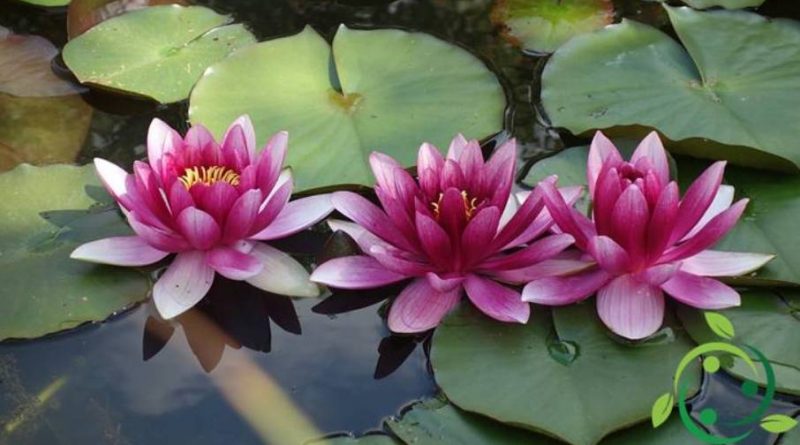How to cultivate water lily
How to cultivate water lily
The water lilies are plants belonging to the genus (Nymphaea L. 1753); they are Spermatophyte plants of the Nymphaeaceae family with very large and decorative aquatic flowers.
Water Lilies are typically rooting and perennial aquatic plants. Some species can be considered marshes as they can easily withstand temporary lowering of the water level. The average height of these plants depends on the depth of the water basin and in any case rarely exceed two meters. The biological form of the species is rooting hydrophyte; that is, they are perennial aquatic plants whose buds are submerged or floating and have a root system that still anchors them to the bottom.
In this card we will see how to cultivate the Ninfea following the most suitable agronomic tricks for this particular type of plant.
It should be remembered that pollination of the water lily is entomologous, that is to say it is done by insects and precisely by flies. The flower of this species has both male (stamen) and female (ovary) reproductive organs located both in the central and innermost part of the floral structure.
The cultivation of water lilies varies according to the species; in general rustic ones, that is suitable for colder or temperate climates, are exclusively cultivated for ornamental purposes and do not require excessive care. In any case, all the nymphs need a sunny exposure and water with a temperature around 20 ° C to grow.
The vegetative development of these water lilies is greater in the summer period. For their cultivation, they should be placed in a small lake consisting of a container that is also eighty centimeters wide and up to a meter high. At the bottom of the container you need to put clay and mature manure. The size of the container must in any case be related to that of the water lily. The small pond realized is then covered with the leaves of the water lily for a surface greater than half, this composition oxygenates the water, offers shelter to the fish and prevents the formation of green algae.
If instead you have to grow tropical water lilies you will have to be in an area with more light, with direct sunlight, and with a water temperature of at least 25 ° C.
Furthermore, as tropical species have a bulb that grows at depths that are not excessive, for their cultivation, a container with less water is required than for rustic species.
In any case, during the winter period, the water lilies of tropical origin must be sheltered, in closed and adequately tempered places. The soil of the container must be composed of clay, sand and mature manure. The conservation of tropical water lilies is carried out in autumn, directly on the original container or by extracting the bulbs and repotting them in another jar containing some damp sand.
For the cultivation of water lilies, in any case, care must be taken to protect them from the cold. Obviously the water lilies originating from the more temperate climates resist even the most rigid temperatures, but to avoid suffering from frost, it is enough to create a very deep pond, where the depth of the water allows to better absorb frosts.
Those of tropical origins, as mentioned, must necessarily be transferred to enclosed places where the temperature must never fall below ten degrees. The tropical water lilies should never be placed in dark and shady places, such as attics or garages. During the winter period the water in the container must be changed every fortnight, while it is not necessary to fertilize.
Be careful to clean the water from the dry leaves that risk decomposing and getting dirty.
Even during the vegetative phase the water lilies do not need a real pruning, but only the removal of dead, dry or ruined leaves that must be gently removed, leaving intact the attachment that protects the plant from the entrance of the water and from the risk of rot. The greatest elimination of the leaves of the water lily is carried out in the period of September, the month in which, precisely to ensure a good nutritional turnover, it is necessary to proceed with fertilization, using soil composed of sand or gravel and mature organic fertilizer.
We now see the propagation of water lilies.
This operation is obtained by division into tufts, that is by cutting with the use of the roots of the plant. Cuttings, or stems, are obtained by taking water lilies from the water, washing the roots and cutting the shoots that have formed on the sides of the root itself. Once these buds have been picked they must be planted in a pot full of soil, immersed in a container full of water. The tufts should be exposed in full sun until they are completely rooted. At this point they can be transferred to the artificial pond that you have set up in the garden. The ideal period for water lily propagation is the month of May.
As far as adversity and diseases are concerned, let us remember that water lilies can frequently be subject to infestations of aphids that subtract the lymph of leaves and flowers. In the case of aquatic plants, these pests concentrate on the petals of the flowers that protrude from the water surface. If the infestation is high, Marseille soap and garlic macerate products can be used.

